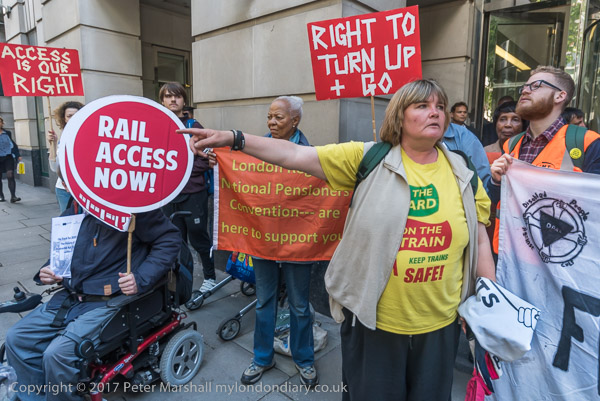
Back in the 1990s it took direct action by disabled people – DAN or the Direct Action Network for disabled people to get the 1995 legislation that made it illegal to discriminate on the grounds of disability in the workplace, along with some consumer protection. But realising the difficulty of provision in some areas it allowed for a timetable of up to 25 years over which barriers were to be gradually removed in areas such as transport.
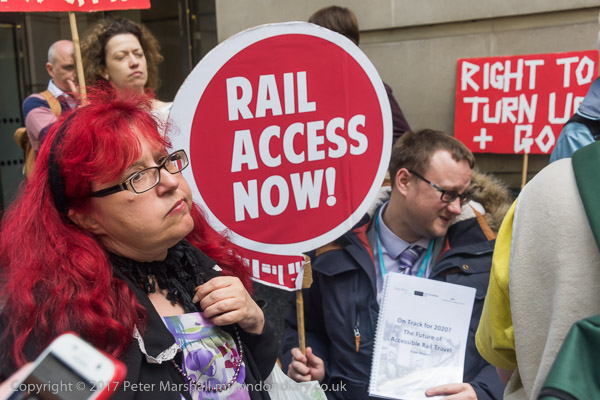
Although there have been some improvements, an enormous amount remains to be done before the intentions of that act and the dreams of those who protested with DAN can be realised. In London, for example, although all buses and taxis are wheelchair accessible, only around half Overground stations and a quarter of Underground stations currently are.
On National Rail, help for disabled passengers is notionally available for any journey, although to work the system requires advance booking, often needing 24 hours notice. And while railway workers generally do their best to help disabled travellers who turn up without arranging their transport – like non-disabled passengers can – there are many stations without staff to assist.
Disabled passengers often need some help from the guard on the train and are particularly worried about plans for one-person operation being pursued by some rail companies and backed by the government. Even where they are able to board or alight from a train without help they may be much slower than the average passenger, and at much greater risk of being trapped by the closure of automatic doors.
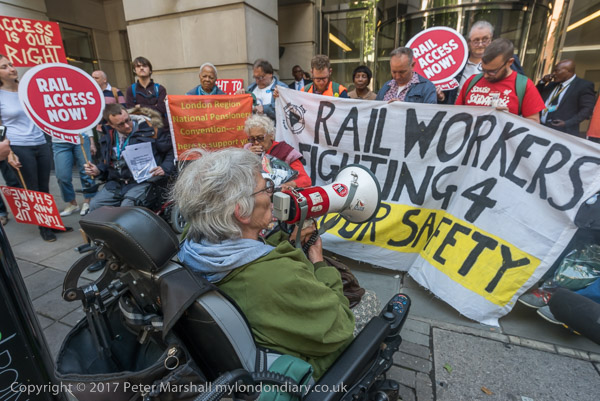
Guards on the train are a valuable safety measure for all passengers, and something I’ve been grateful for on various occasions. One was when my train was derailed, and although there were no injuries there was a certain amount of panic, and the guard calmed people, kept us informed and assisted in our de-training and transfer to another train, but the others have involved drunk or otherwise obstreperous passengers.
Buses can manage with just a driver, though I sometimes miss the conductor – and suspect that there would be fewer problems with buggy users refusing to vacate disabled spaces when required. Back in the old days, conductors ensured that all buggies were folded and kept an eye on them and other luggage in the luggage space.
But what works with a smallish vehicle like even a double-decker bus seems entirely inappropriate for the 8, 10 0r 12 car trains which are now common on many routes on Southern and other railways serving London. And surely any vehicle which seats perhaps more than a hundred people will provide sufficient fare income to make paying for a second member of staff of little consequence.
Like DAN, DPAC are a direct action network, protecting the rights of disabled people and still fighting for them to be properly provided. Most of their actions have been directed against the government and the benefit cuts it has introduced which have resulted in great hardship and far too many deaths among disabled people, with policies either deliberately intended to kill or displaying a woeful ignorance of or indifference to their likely effects. This action too was against the government, and in particular the Department of Transport, which has been shown to be pressuring Southern Rail to continue the dispute with the RMT.
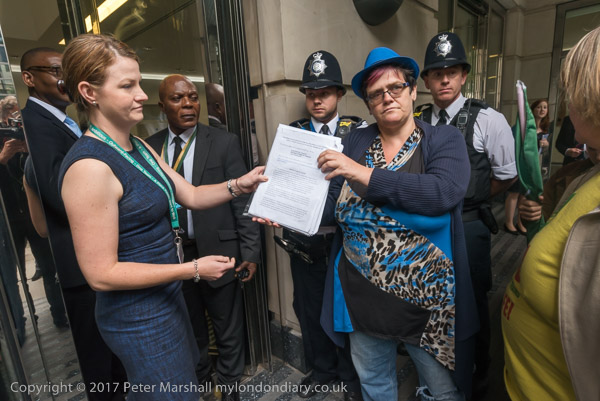
Someone only came out from the Dept of Transport to take the petition after the protesters had waited for a very long time and were threatening to keep the entrance blocked until it was taken; it seemed fairly clear that the department were hoping the protesters would go away if they kept them waiting long enough. They should have learnt by now that DPAC are made of sterner stuff, though I might have left them to it as I had a train to catch.
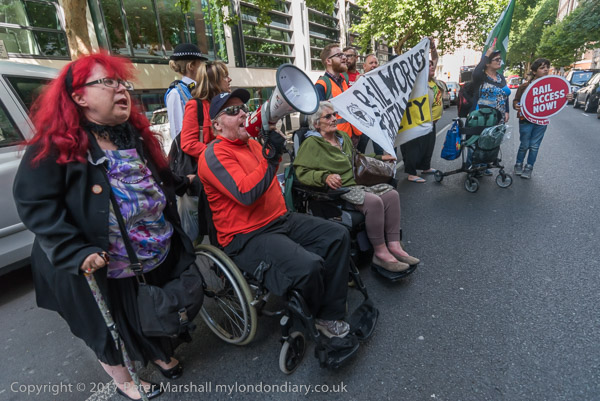
As the joint protest with the RMT and others ended, DPAC ended their protest in what is now their traditional way, with a road block outside the ministry. After a few minutes police managed to persuade them to move so they only blocked the road in one direction, and the road block was only short.
The DPAC action was one in a whole week of protests to coincide with the London World Para Athletics Championships which DPAC say the government uses to try to show it is highly supportive of the disabled while actually they are highly discriminatory against all those who are not high-performing para-athletes. DPAC are certainly high-performing protesters.
More at DPAC/RMT ‘Right to Ride’ protest.
______________________________________________________
There are no adverts on this site and it receives no sponsorship, and I like to keep it that way. But it does take a considerable amount of my time and thought, and if you enjoy reading it, a small donation – perhaps the cost of a beer – would be appreciated.
My London Diary : Buildings of London : River Lea/Lee Valley : London’s Industrial Heritage
All photographs on this and my other sites, unless otherwise stated, are taken by and copyright of Peter Marshall, and are available for reproduction or can be bought as prints.
To order prints or reproduce images
________________________________________________________